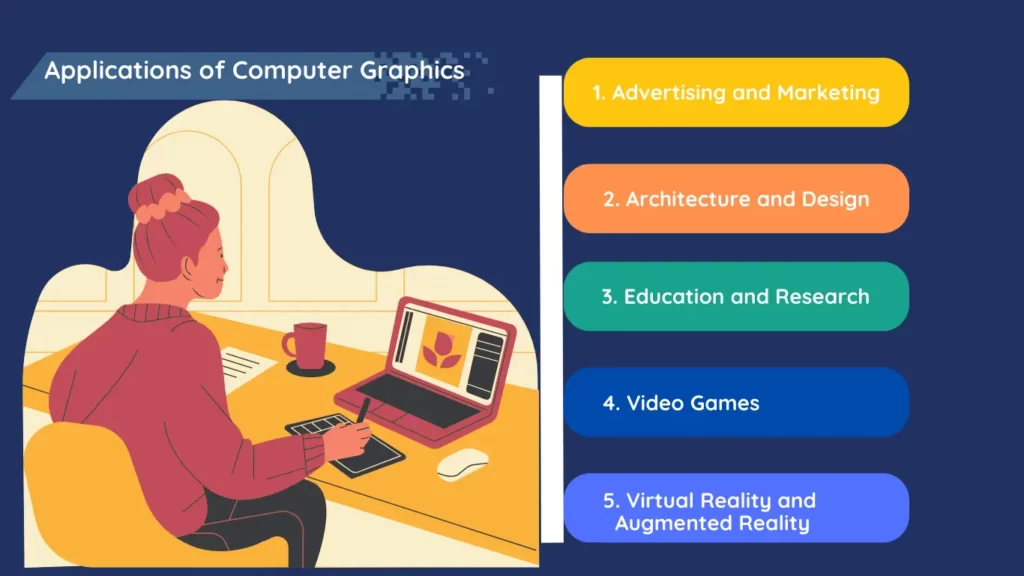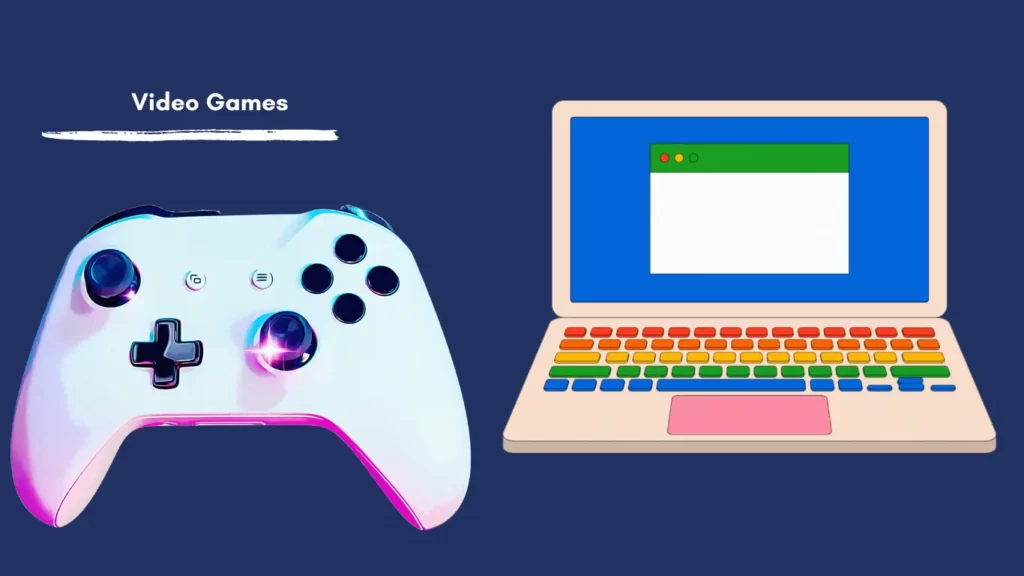Applications of Computer Graphics: Computer graphics have revolutionized the entertainment and media industry, allowing creators to bring their imaginative worlds to life on the big screen, small screen, and even on stage. From visually stunning movies and television shows to captivating animated films, computer graphics have opened up endless possibilities for storytelling and visual effects.

Television shows have also benefited greatly from computer graphics. From creating hyper-realistic product renderings to designing visually stunning animated commercials, computer graphics have become an essential tool for marketers to effectively communicate their brand messages.
Uses of Computer Graphics | Application of Computer Graphics
1. Advertising and Marketing
In the realm of advertising and marketing, computer graphics have become an indispensable tool for creating visually appealing and engaging content. Marketers are constantly seeking innovative ways to capture the attention of their target audience, and computer graphics provide the perfect solution.
By using advanced rendering techniques, marketers can showcase their products in a visually stunning and realistic manner. For example, a car manufacturer can create a lifelike 3D rendering of their latest model, allowing potential buyers to explore the car from different angles and even customize its features.

Another powerful application of computer graphics in advertising is the creation of animated commercials. By leveraging the capabilities of computer graphics, marketers can tell compelling stories and capture the attention of their audience in a unique and memorable way. Animated commercials allow for the creation of fantastical worlds, where anything is possible.
2. Architecture and Design
Computer graphics have transformed the field of architecture and design, enabling architects and designers to visualize their ideas in ways that were once unimaginable. With the help of computer graphics software, architects can create detailed 3D models of their buildings, allowing them to explore every aspect of the design before construction begins.
Computer graphics also play a crucial role in interior design. Designers can use computer graphics software to create virtual representations of rooms, allowing them to experiment with different color schemes, furniture layouts, and materials. This enables designers to present their ideas to clients in a visually compelling way, helping them to visualize the final result and make informed decisions.
3. Education and Research
Computer graphics have become an invaluable tool in the field of education and research, allowing students and researchers to visualize complex concepts and data in a more intuitive and engaging manner. Whether it’s exploring the human body in biology class or analyzing complex datasets in scientific research, computer graphics have made learning and research more accessible and interactive.
In the field of education, computer graphics can be used to create interactive simulations that help students understand abstract concepts. For example, in physics classes, computer graphics can be used to simulate experiments and visualize the effects of different variables.
For example, in the field of astronomy, computer graphics can be used to create 3D models of galaxies, allowing researchers to explore their structures and study their evolution.
4. Video Games
Computer graphics have played a pivotal role in the evolution of video games, enabling developers to create immersive virtual worlds that captivate players and provide unforgettable gaming experiences.
Computer graphics also play a crucial role in the creation of lifelike characters in video games. Through advanced techniques such as motion capture and facial animation, developers can bring characters to life with realistic movements and expressions.

Computer graphics allow developers to create visually stunning and immersive game worlds. This level of realism enhances the player’s sense of immersion and makes the gaming experience more engaging and memorable.
5. Virtual Reality and Augmented Reality
Computer graphics have become the backbone of virtual reality (VR) and augmented reality (AR) experiences, providing users with visually stunning and immersive digital environments. In the realm of virtual reality, computer graphics enable the creation of fully immersive 3D environments that users can explore and interact with.
Augmented reality, on the other hand, involves overlaying digital information onto the real world, enhancing the user’s perception of their surroundings. Computer graphics are used to seamlessly integrate virtual objects into the real world, creating a blended reality experience. Whether it’s overlaying navigation instructions onto the road or placing virtual furniture in a real room, computer graphics make AR experiences more engaging and interactive.
Conclusion: Applications of Computer Graphics
The application of computer graphics in today’s digital world is truly limitless. From entertainment and media to advertising and marketing, architecture and design, education and research, video games, and virtual and augmented reality, computer graphics have transformed numerous industries and opened up new possibilities for creativity and innovation.
Whether it’s pushing the boundaries of visual storytelling in movies, creating captivating advertisements, revolutionizing architectural design, enhancing education and research, providing unforgettable gaming experiences, or transforming the way we interact with the digital world through VR and AR, computer graphics will continue to shape and redefine our digital landscape.
So that’s all about- Applications of Computer Graphics.
